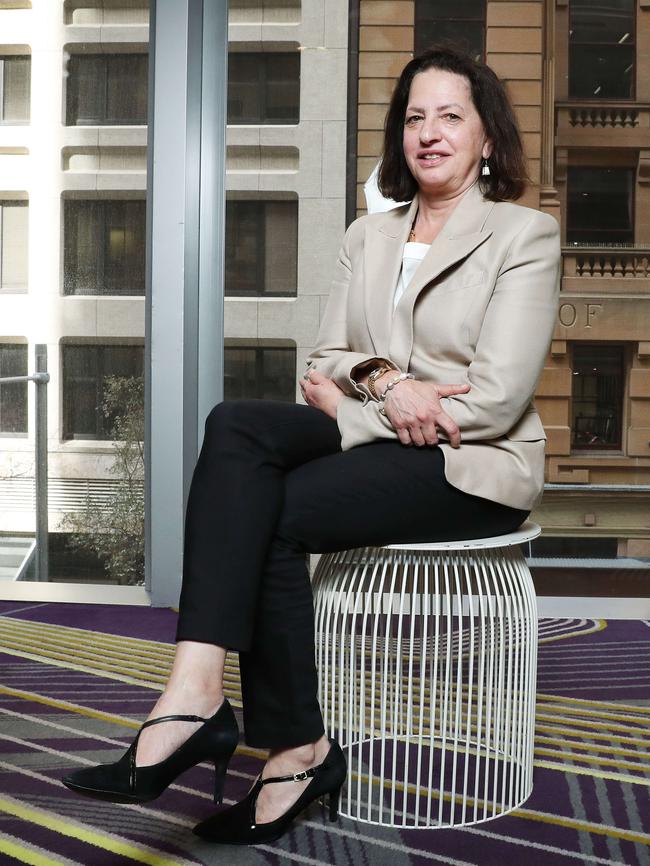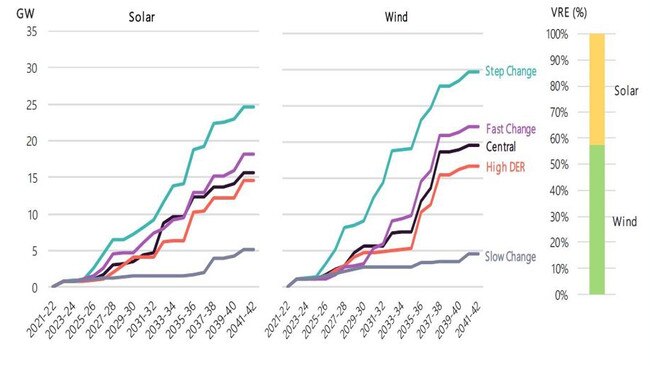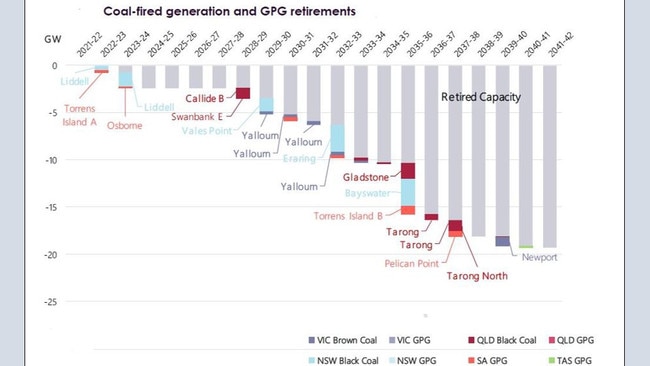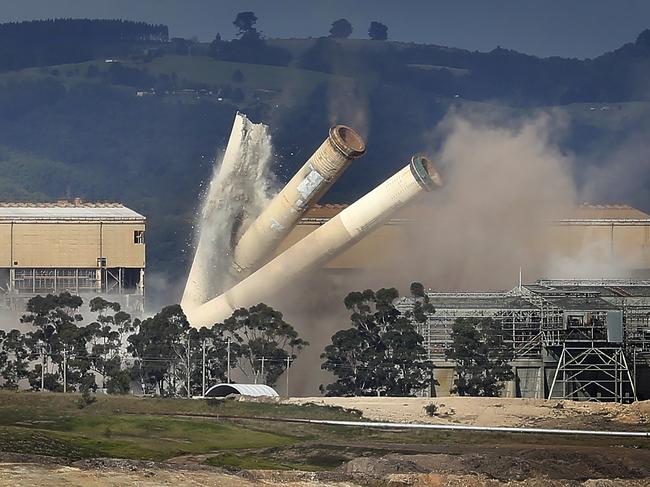Australian Energy Market Operator plan to transform electricity grid
Linking up NSW and SA with a transmission line through solar-rich regions is a crucial part of fixing the grid, a major report says. But it might cost a lot more than earlier estimated.
SA News
Don't miss out on the headlines from SA News. Followed categories will be added to My News.
The electricity interconnector with NSW has been labelled as one of the highest priority projects to fix the power grid but potential costs have increased by as much as $1 billion.
A major national plan published on Thursday says the project is “critical to address cost, security and reliability issues”.
The initiative, called Project EnergyConnect, “is close to completing its regulatory approval process, with project completion expected by 2024-25” according to the Australian Energy Market Operator.
The agency’s plan sets out a strategy for the national electricity market as two thirds of coal-fired generators and much of the gas-powered plants reach retirement, replaced by a massive surge in renewable energy – including rooftop solar on homes and business doubling or trebling in capacity by 2040.

“The integrated system plan analysis confirms that as our coal plants retire, the least-cost transition of the national electricity market will be to a highly diverse portfolio consisting of distributed energy resources (mainly rooftop solar) and variable renewable energy, supported by multiple dispatchable resources,” AEMO chief executive Audrey Zibelman said.
The plan will deliver a net benefit of $11 billion, AEMO said.
Overall, more than $100 billion is expected to be invested in new transmission lines, grid-scale wind and solar and rooftop solar as the system transforms.
Project EnergyConnect has cleared the hurdle of proving the investment makes financial sense for consumers.
Proponents ElectraNet in SA and TransGrid in NSW are now close to submitting a more detailed case to the Australian Energy Regulator.
The AEMO report says the project’s costs, which were formerly estimated at $1.53bn, would more likely be up to $2.6bn.
An ElectraNet spokeswoman said the company “has been undertaking additional economic analysis for the project based on new and updated costs and benefits” and expected to finalise those by September.
Energy Minister Dan van Holst Pellekaan said the State Government hoped for a regulatory decision on project by the end of the year.
“This report confirms that despite increased civil construction costs, the benefits to consumers have increased even more, which means that the project still will deliver savings to consumers in SA and NSW,” he said.
Federal Energy and Emissions Reduction Minister Angus Taylor said the Commonwealth was in “positive discussions” with the SA Government.
“Any transmission project that is developed must provide value to consumers,” Mr Taylor said.


The AEMO plan places two further transmission projects on the agenda to support solar and wind in SA.
A Mid North upgrade would cost $420 million to $770 million and a South East upgrade about $50 million.
Those two projects were pencilled in for the 2030s with a Roxby Downs upgrade for solar farms further down the track.
The plan anticipates most of SA’s key gas-fired power stations retiring – Torrens Island A in 2022-23, Osborne in 2023-24, Torrens Island B in 2035-36 and Pelican Point in 2037-38.
AEMO expects batteries to be more economic as backup for renewables by the mid 2030s.

ElectraNet has invested in strengthening the grid through installing synchronous condensers, with the first at Davenport near Port Augusta scheduled to be energised in late November.
It has received applications from more than 15 solar and wind projects in SA, totalling 3.5GW, to connect to transmission infrastructure. Those projects require regulatory approval as well as final investment decisions by the companies involved.
